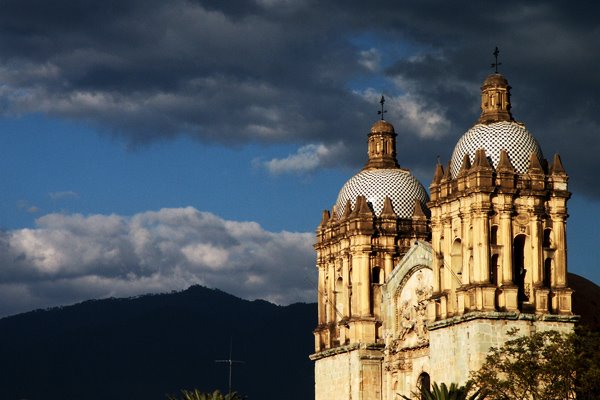 In El Jicaral, an agency in the village of Coicoyán de las Flores, from times immemorial they have venerated the " Senores de la Lluvia," or "the Gods of the Rain" to help provide good weather, food and to cure diseases that neither doctors nor the other Gods have been able to cure. This indigenous town is six hours from Huajuapan of Leon and is a place where people live closely with nature. As in many mixtecos towns, there has been immigration to the United States, and, as in other villages, new religions have been introduced, which have imperiled customs and traditions. However, the thousand residents of this village have not allowed their traditions to fade.
In El Jicaral, an agency in the village of Coicoyán de las Flores, from times immemorial they have venerated the " Senores de la Lluvia," or "the Gods of the Rain" to help provide good weather, food and to cure diseases that neither doctors nor the other Gods have been able to cure. This indigenous town is six hours from Huajuapan of Leon and is a place where people live closely with nature. As in many mixtecos towns, there has been immigration to the United States, and, as in other villages, new religions have been introduced, which have imperiled customs and traditions. However, the thousand residents of this village have not allowed their traditions to fade.One such tradition is El señor de la lluvia in which, for generation after generation, the inhabitants believe that if they are to have a good rainy season, that there are no droughts, they must perform a ritual to El señor de la lluvia through the stones that represent him in this earthly world. According to the belief, he has the power to provide a good climate for people, but also to punish them if they waste food or act in defiance of the deity. With the arrival of the God of the Catholic religion, El señor de la lluvia was divided into a thousand pieces and sent into the sea, and returned the form of stone. From then on if somebody needed rain they would have to ask these stones.
At ten in the morning, the inhabitants of the Jicaral meet in the temple of the El señor de la lluvia, where the women begin making of food while" Don Marcelino," who has devoted his life to the god, begins preparation for the ritual, in which all will volunteer to participate. In front of the stones that represent the god, he draws half a circle, an arc, that represents the process of the life; " You are born, increase and die; the other half of the circle, that is not seen, is in the other dimension that you coexist with other people who you knew in your time and are with the gods."
The don prepares thirty three offerings for the deities. People arrive early with flowers and candles for the ritual, which represent petitions that they have, for health, good harvests and other needs, but not material things. In an ancient language, Don Marcelino begins to call to the other deities, the gods of health, the god of the maize and they accompany him during the ritual, in which they all request water, food and a bountiful season.
Even though many cannot understand the ancient words, Ofelia Pineda relates, "It begins with a call to the Heart of the Sea, then to the second mountain, then to Tenochtitlán, from the heart of old Mexico, the lake, where the eagle with the serpent, to the Pacific Ocean. People eat and drink the brandy, the food, everything so that we are joined." The ritual continues until six in the morning.
Last year, El señor de la lluvia was moved from a piece of communal land that was filled with stones and more than 20 varieties of trees. Even though people protested, a school was built there. For Ofelia and the inhabitants, the deity knew that this was going to happen and that is why the mango trees lost their flowers and why there were so few mangos and those that were obtained were rotten and filled of worms.
As in Jicaral, the majority of indigenous communities continue these types of religious rituals, with many variants and in diverse forms. They continue to follow their traditions, generation after generation, because the young are used to participating and although some emigrate to the United States and other parts of the Republic, they cling to their roots.
Ofelia adds, " The mixture of cultures is good, but you must maintain your roots. There has always been globalization, but if nothing else, it is necessary to see who we are, from where we come and towards where we go; They say progress is necessary to civilize the 'natives,' but in what sense? If I destroy what is good and I bring about global warming, if I do damage yet say that I am civilized, then who are really the uncivilized ones and who are savages."


1 comment:
Hola
Soy de ese pueblo mixteco, salí de niña a la ciudad porque mis padres buscaron suerte en la ciudad de Oaxaca y ahora vivo en la Ciudad de México me encanta que hayas escrito de las tradiciones de mi pueblo y que de algún modo las recuperes y les hagas justicia para que no caigan en el olvido.
Gracias por escribir del Señor de la lluvia Da zahui.
Espero que escribas más acerca de la magia de esos pueblos.
Post a Comment